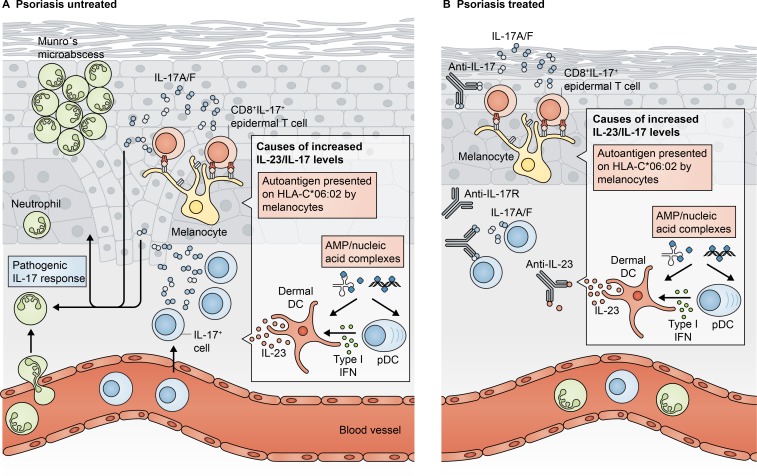Figure 2.
IL-17 immunity in human psoriasis. (A) Psoriasis pathogenesis is induced by increased levels of IL-17 that stimulate keratinocyte proliferation resulting in acanthosis, para- and hyperkeratosis, and release of AMP and chemokines that recruit neutrophils from the circulation, leading to formation of Munro’s microabscesses within the stratum corneum. Increased IL-23/IL-17 levels can be caused by presentation of autoantigens by melanocytes to autoreactive epidermal CD8+ T cells resulting in IL-17 secretion and by plasmacytoid DCs (pDCs) activated by antimicrobial peptide (AMP)–nucleic acid complexes to secrete type I interferons that in turn induce secretion of IL-23 by dermal DCs subsequently stimulating and recruiting IL-17 producing lymphoid cells. (B) Targeting IL-23, IL-17, and/or IL-17R by specific mAb leads to less stimulation of keratinocytes and IL-17–secreting cells. This results in reduced acanthosis, inhibits infiltration of neutrophils, and thus ameliorates psoriasis pathology.

